It is NOT real life!
The main tip is to remember is that this is NOT real life! Everyone starts with $600, and half an hour later could be a billionaire or even trillionaire.
It’s a game, don’t base your strategy on how things work in reality. The rules for companies growing, dividends, mergers, are all exaggerated. Otherwise the game would be dull. Embrace this, don’t be too conservative.
Understand how companies grow
Every time a new square is added to a company, its share price increases by $10, and players are paid a dividend. The more shares you have in a company, the higher the dividend you receive. Even better, if the new square touches a planet, it increases by a further $50. In extreme cases, it’s possible to add a square that touches 3 planets. This increases the share value by $160.
Cheap vs planet companies
In the early stages of the game, it’s better to create planet companies. When you create a new company, you get 5 shares as a founder’s bonus.
- For a typical planet company, this is 5 x $60, e.g. $300.
- For a cheap company, say $20, you only get $100.
You literally get 3 times as much value from a planet company.
Later on, this is less important. It’s more important to grow quickly. Let’s consider 2 examples.
You have $300 to invest in either a cheap ($20) or planet ($60) company.
In a cheap company, that equates to 15 shares (15 x $20). If it grows by 1 square, the share price increases to $30. Your shares are now with $450.
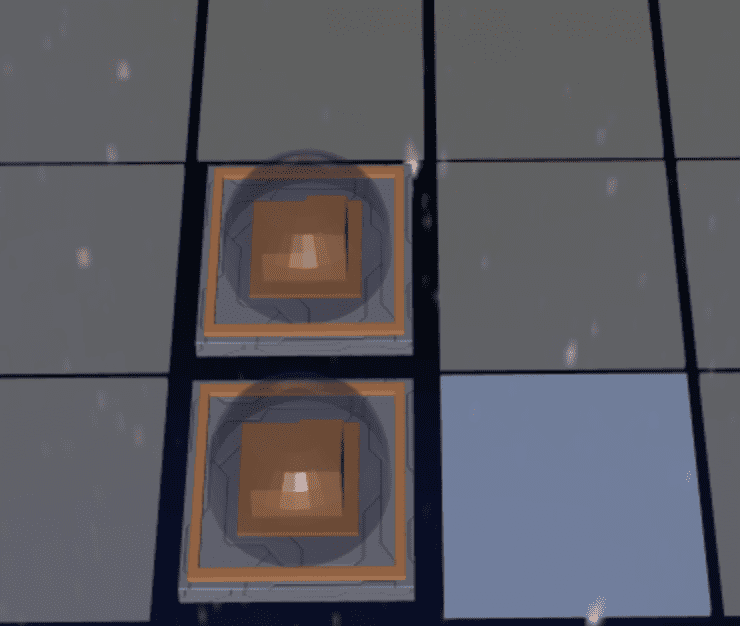
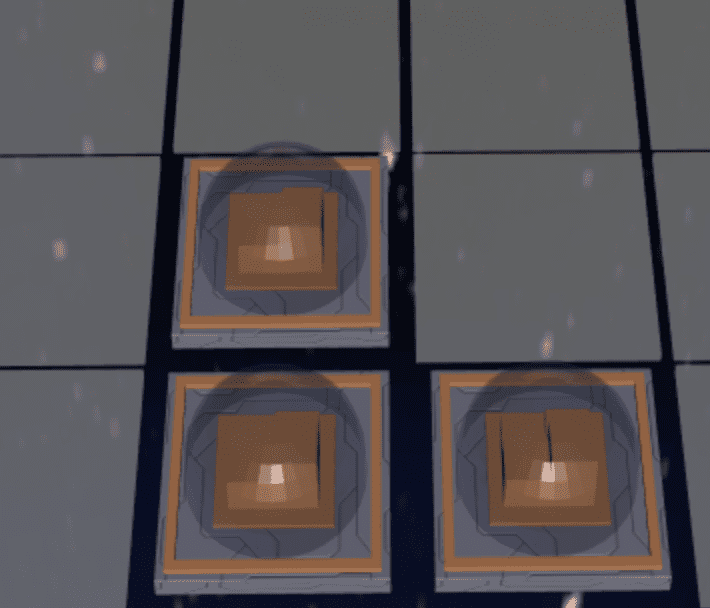
By comparison, if you’d invested $300 in a planet company, you would have 5 shares (5x$60). If it also grows by 1 square, that becomes $350 (5 x $70).
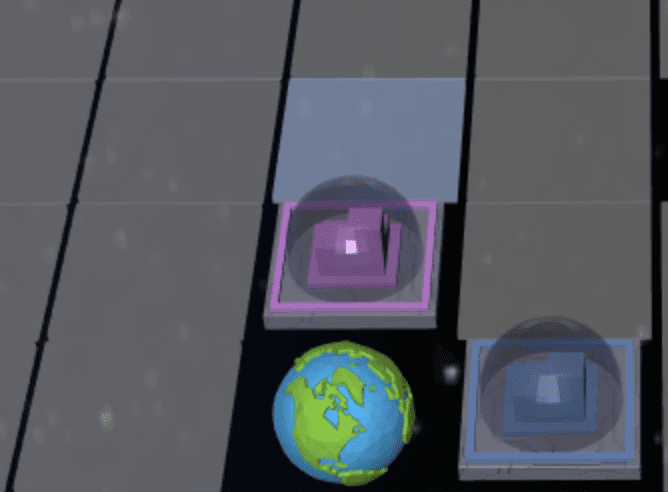
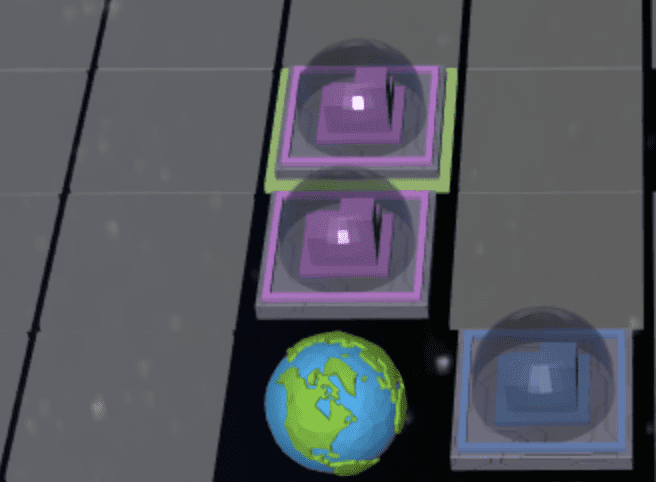
The cheaper company yields a $150 profit, compared to a $50 profit for the planet company. Understanding the maths is essential.
Mergers
THIS IS REALLY IMPORTANT, in Space Start Up 3D, mergers are not like real life. Again, it’s a game!
When 2 companies touch on the board, they merge. The larger company (the one with the most squares) buys the smaller one. Shares in both companies are added together.
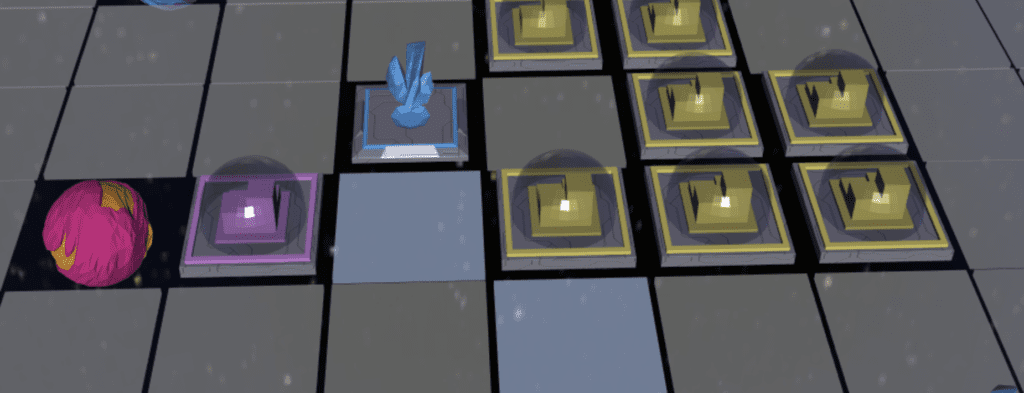
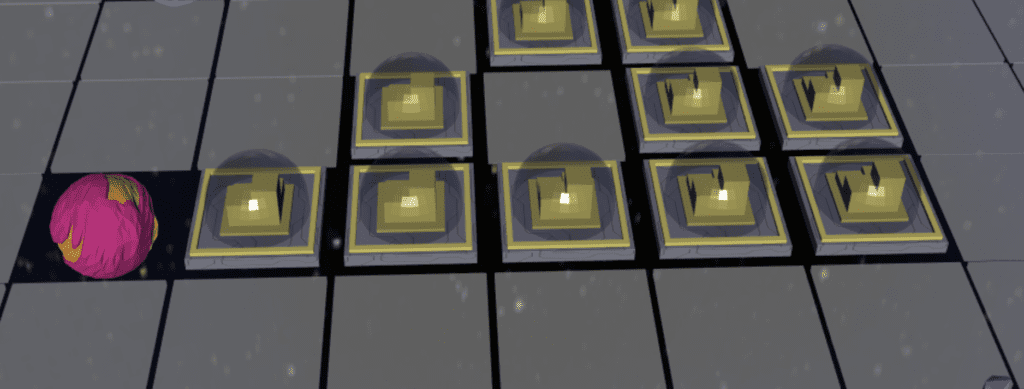
Player 1 might have 10 shares in Company A and 10 shares in company B, they now have 20 shares in the new company, regardless of the previous share prices.
Mergers ignore share prices!
This bit is really, really important, I can’t stress this enough. The merger ignores the share price. Company A might be $200 and Company B $20. For mergers, they are treated the same. The obvious advantage here is to invest your money in Company B ($20) before a merger happens.
Let’s do some simple maths to illustrate.
Before the merger, both players have $2,000 worth of shares:
- Player 1 has 10 shares in Co. A, and 0 shares in Co. B.
- Player 2 has 0 shares in Co. A, and 100 shares in Co. B.
After the merger, the share value increases to $230.
- Player 1 has 10 shares, with a value of $2,300.
- Player 2 has 100 shares, with a value of $23,000
Player 2 is more than $20,000 better off by investing in the cheaper Co. B. In addition, Player 2 gets a large payout because their shares have been bought by the bigger company (Co. A).
Choosing a position
At the beginning of the game, everyone gets a chance to choose a company. You will literally be given 5 different options for a new company.
Look for companies which are:
- Close to other planets, so they might grow quickly.
- Close to other companies, good for early mergers.
- Close to the centre. Central companies are more likely to grow quickly than ones on the edge of the board.
This is a great choice for a company. There are 2 options to grow the company into double-planet positions. Either of which would increase the share price by $110 ( 2 x $50 for each planet, and $10 for the square).
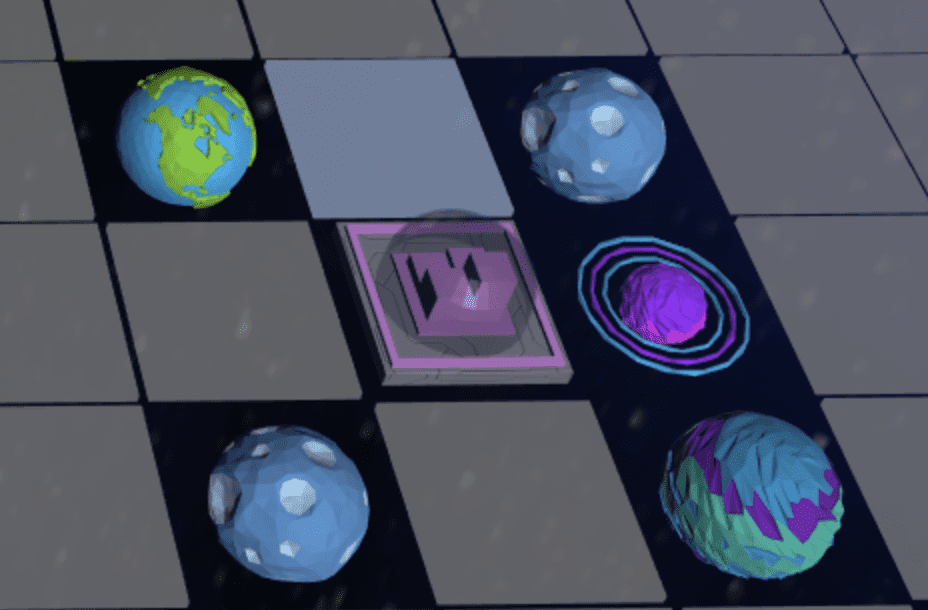
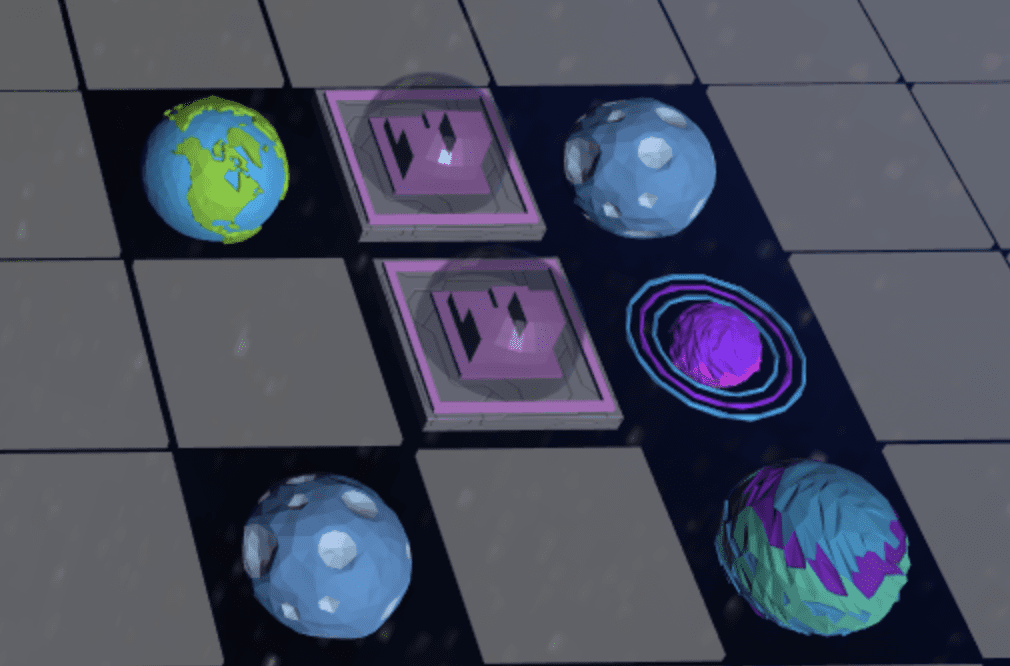
Probability (ish)
This is more of a guideline; the maths is too complicated to calculate on the fly. The decision process is more visual. Look at nearby opportunities.
A $20 company only has 6 potential squares for growth. Comparatively, larger companies have a lot more opportunities.
Board position is very important. A cheap company in a corner, with no other companies or planets nearby, has less growth opportunity. A $20 company in the middle of the board, with lots of nearby planets or companies, is more likely to grow or merge, resulting in a significant share price increase.
Let’s consider an example. The blue company ($20) is reasonable central, with lots of nearby crystals and planets for fast growth.

8 turns later, the blue company has grown quickly, it now occupies 10 squares and is touching 1 planet. Its share price has increased to $150. Better still, it’s about to merge with the green company.

After the merger, the new company has a share price of $250. That’s incredible growth in 10 turns.

Watch your opponents
This seems obvious, but is worth re-stating. In online mode you don’t know which companies other players have invested in. However, you do see what options they have, and which one they select. For example, if they have a choice of adding to several companies, note which one they choose. There is a reason why!
Consider the following example. There’s a good move for orange, a great move for yellow (planet), and 3 moves that don’t help any company.
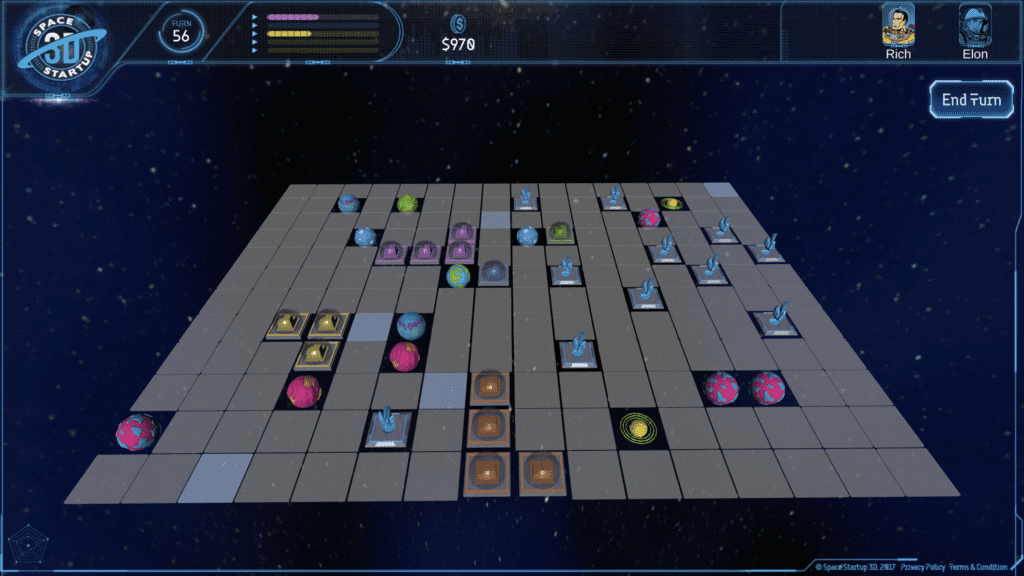
There are 4 scenarios here:
- I have a lot of yellow shares, so I choose the yellow move.
- I have a lot of orange shares, so I choose the orange move.
- I have shares in both yellow and orange, so I probably choose yellow as it will touch a planet.
- I don’t have shares in either yellow or orange, so I’ll choose 1 of the other 3 moves.
The choice I make gives a big clue as to which companies I have shares in. Obviously, I might be bluffing. I could also change my mind, sell some green shares next move and buy orange. So there are no guarantees, but there are always clues.
Take risks
My final advice is to take risks. It’s not real money. If you lose, you don’t need to call your bank manager. It’s a game, have fun.
Generally, I take less risks at the beginning of the game, and more as it progresses.
If I’m winning, I tend to hedge and consolidate. E.g. I choose 2 or 3 companies and split my money.
If I’m losing, I go all in on one company. I choose the one that I think has the best chance of growing quickly or merging. If I’m losing by a long way then I try and create more options for the person leading. This makes it harder for them to buy as many shares in my “all-in” company. This is literally a moon-shot, but it does work sometimes.
